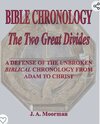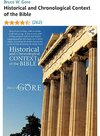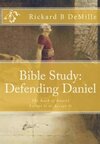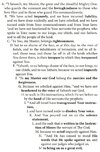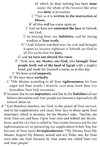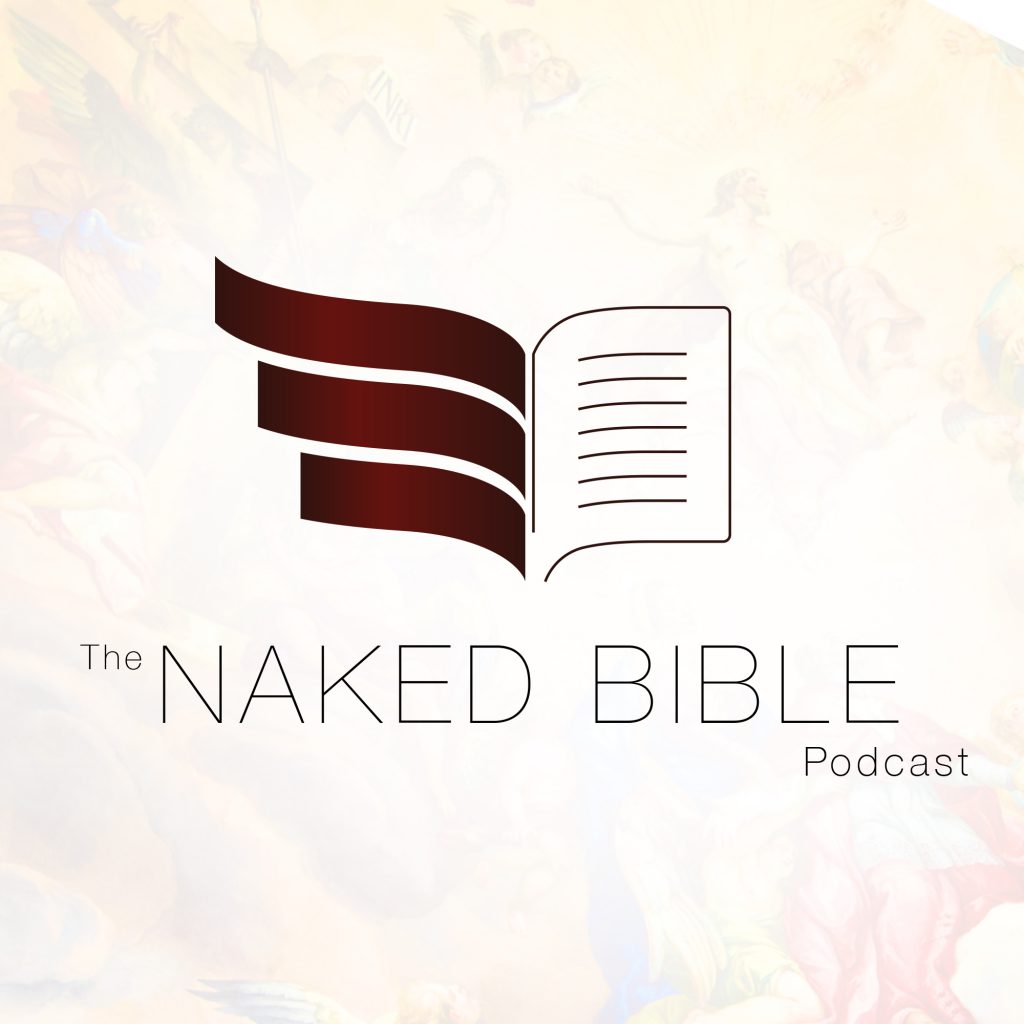Part 12 Daniel 9:27 Part 2
Daniel 9:27b and for the overspreading of abominations he shall make it desolate, even until the consummation, and that determined shall be poured upon the desolate
***
Verse 27b begins the contrast to 27a, and 26a, and is parallel with 26b. Therefore Daniel 9:27b will communicate language about either the coming Prince of 26b, or the destruction that he brings.
-Much earlier I shared the remark of Hebrew scholar Dr Michael Heiser (RIP), about how Daniel’s 70 weeks prophecy was the pit of despair when it comes to exegesis of Old Testament prophetic literature. If that is true, then verse 26 & 27 are the bottom depths of the pit of despair. And the last half of verse 27(b) is the Hades/Tartarus/Sheol of the whole matter.
***and for the overspreading of abominations he shall make it desolate
-The trouble with this verse begins in translation. Most translators cannot agree with each other on how to parse the words to give it plain meaning. Some translations of this verse even carry obvious bias that has to be overcome.
-The plain reading of how the original meaning of the original writer meant for the original audience should be the goal of every translator, but this verse shows that even this is sometimes thrown out the window when "scholars" bring their presuppositions into the text.
-Below are some of the translations of this section per Bible version. Notice how different they are. Translation is often not an exact science, but this is truly bizarre:
*
King James Bible: "
and for the overspreading of abominations he shall make it desolate, even until the consummation, and that determined shall be poured upon the desolate."
*
English Standard Version: "
And on the wing of abominations shall come one who makes desolate, until the decreed end is poured out on the desolator.”
*
Douay-Rhiems: "
and there shall be in the temple the abomination of desolation: and the desolation shall continue even to the consummation, and to the end."
*
North American Standard Bible: "
and on the wing of abominations will come one who makes desolate, even until a complete destruction, one that is decreed, is poured out on the one who makes desolate."
*
New English Translation: "
On the wing of abominations will come one who destroys, until the decreed end is poured out on the one who destroys.”
*
Amplified: "
and on the wing of abominations will come one who makes desolate, even until the complete destruction, one that is decreed, is poured out on the one who causes the horror Then the "Horrible Thing" that destruction will be put there."
*
Youngs Literal Translation: "
and by the wing of abominations he is making desolate, even till the consummation, and that which is determined is poured on the desolate one.' Destructive people will cause desolation on the pinnacle until it is complete."
*
Common English Version: "
Then the "Horrible Thing" that causes destruction will be put there. And it will stay there until the time God has decided to destroy this one who destroys. On the wing of abominations will come one who destroys."
*
International Standard Version: "
Destructive people will cause desolation on the pinnacle until it is complete and what has been decreed is poured out on the desolator."
*“LITV:"And on a corner of the altar will be abominations that desolate, even until the end. And that which was decreed shall pour out on the desolator."
And in the temple there shall be abomination.”
*
Revised Version: "
and upon the wing of abominations shall come one that maketh desolate; and even unto the consummation, and that determined, shall wrath be poured out upon the desolator."
How does anybody make any sense of this?
To understand 27b, it is necessary to break down the main words and concepts first.
-Smith's Bible Dictionary, Fausset's Bible Dictionary, and the International Standard Bible Encyclopedia all say that this passage is referring to "t
he abomination of desolation". I'll examine the parts and then put them together.
The questions presented are:
- What is it?
- Who does it?
- When does it happen?
- Why did this happen?
1–What is it?
~The abomination of desolation, and the derivative terms, are found in six places in scripture. Daniel 9:27 is the first place, and the following are the other 5:
*Daniel 11:31
And arms shall stand on his part, and they shall pollute the sanctuary of strength, and shall take away the daily sacrifice, and they shall place the abomination that maketh desolate
*Daniel 12:11
And from the time that the daily sacrifice shall be taken away, and the abomination that maketh desolate set up, there shall be a thousand two hundred and ninety days
*Matthew 24:15
When ye therefore shall see the abomination of desolation, spoken of by Daniel the prophet, stand in the holy place, (whoso readeth, let him understand:
*Mark 13:14
But when ye shall see the abomination of desolation, spoken of by Daniel the prophet, standing where it ought not, (let him that readeth understand,) then let them that be in Judaea flee to the mountains:
*Luke 21:20
And when ye shall see Jerusalem compassed with armies, then know that the desolation thereof is nigh.
-Daniel 11:31 pertained to the actions of Antiochus Epiphanes in 167 BC, his capture of Jerusalem, and the defilement of the sanctuary and altar. Daniel 12:11, a highly debated portion of scripture, will be dealt with in a later post. Matthew 24:15, Mark 13:14, and Luke 21:20 all are linked to Daniel 9:27, and foretell the Abomination of Desolation in Jerusalem in 66-70 AD. We know this because Jesus said as much in scripture.
Therefore, surrounding information from those NT passages will help flesh this out.
Jesus also communicated that this could be grasped by reading the scripture.
-For some reason, many modern prophecy teachers speak of the abomination of desolation as some single event. It is not an event; it is a combination of things; but mainly it's a description, and it happens at least twice, maybe even three times. It happened in 167 BC, as mentioned earlier. It almost happened a century later when Pompey Magnus invaded Jerusalem, but stopped short of desecrating the Temple. The fulfillment of this event happened in conjunction to the events surrounding the destruction of Jerusalem in 70 AD, and coincides with the Temple and the city being laid waste.
*
abominations
-The word "abominations" is translated from the Hebrew word " שׁקּוּץ" [shiqqûts] meaning detestable thing or idol; abominable thing; abomination, idol; detested thing; filth; filthy things; an object of disgust; a detestable act; a ceremonial pollution. It could even be filthy garments.
-This word is in many cases used to describe an idol, but in the New Testament this is largely a secondary meaning. In Luke 16:15 it is applied to the covetousness of the Pharisees; In Titus 1:16 it is applied to those who deny God in their works; in Revelation 21:8, 27 it is applied to persons who do wickedly. Hence, it could refer to an idol, idolatry, or some horrendous act that is considered filthy; in other words this is a thing, action, or behavior. Therefore, the abomination in this passage is either an idol, an idolatrous act, a behavior, or a combination of the three.
-It could refer to a polluted person, place or action. When Antiochus defiled the Temple, he had a pagan priest set up a small altar on top of the altar of God, and began sacrificing pigs to Zeus. This was the "abomination of desolation" predicted in Daniel 11:31.
In a similar manner this is speaking to something that defiles and desecrates the Temple and altar.
--Whatever the true meaning is, the spirit of the phrase emphasizes that
this abomination is outrageous in its character.
*
desolate:
from the Hebrew word " שׁמם" shâmêm.
Vine's Expository Dictionary of OT Words renders this as: to be desolate, astonished, appalled, devastated, ravaged, stupefy, destroyed.
*
overspreading.
-from the Hebrew word " כּנף" [kânâph] meaning: "wing, extremity, edge, winged, border, corner, shirt". This word causes complications because the translators guess at its use. So you see it translated as "wing" [as in the thing on a bird], or as wing [like a porch on a large building]
or as "overspreading" [as in covered like the wings of a bird covers],
-The Geneva and King James Bible translations use the idea that the abomination spreads defilement over the Temple; therefore they use the word "Overspreading".
-Modern Bible versions tend to use the literal rendering "on the wing". This causes a lot of guessing to fix a stable meaning too. Some take it as a part of the Temple or altar. Some just use a dynamic equivalent phrase [For instance, the original Wycliff translation was "and the abomination that maketh desolation shall be placed in the Temple.", which is very understandable but is guesswork].
Some take it metaphorically. Joseph Benson puts it this way: "Overspreading Or, more literally, And he shall be a desolator by the wing of abominations. Or, And being a desolator, he shall command over a wing of abominations. The desolator is the Roman army of sixty thousand men:. The wing, as well as the flood, is the Hebrew metaphor for great armies. Abominations, in the Jewish style, are idols. In this prophecy, it denotes the standards of the Roman legions."
-This abomination is so great that it desecrates, or contaminates God’s holy place.
-The emphasis needs to be given to the idea of ceremonial pollution of the Temple and altar. This abomination is contaminating the sacred space that belongs to God. And the method of this contamination is totally outrageous.
-This outrageous detestable act is so pervasive and complete, it leaves the sacred space of God devastated.
-A proper understanding of how important this defilement is to God is needed. It is beyond the scope of this study, but I will leave a few links by a Hebrew scholar to explain the Levitical system of cleansing the Temple/Tabernacle/priests, and how meticulous it was.
Book by Michael S Heiser
Notes on the Book of Leviticus
Also, here is a podcast by the same author, on the same subject.
Leviticus is a fascinating but neglected book. In this episode Dr. Heiser introduces the flow of the book and important concepts that will reoccur throughout the book: sacred space, holiness, and ritual impurity vs. moral impurity. Facebook Twitter Gmail Digg LinkedIn Pinterest reddit Like 21

nakedbiblepodcast.com
-Bottom line:
-
The abomination of desolation is when someone or some people commit an act, or do something that desecrates the most holy area of God in an outrageous manner that leaves God's sacred space contaminated and totally defiled.
2-Who does it?
-Who commits the abomination of desolation? There are two possible answers that this passage allows; 1-the people of the Prince to come, 2-or the Jews themselves.
- The first view is that it would be an invading army or power that commits an act of sacrilege in the Temple or on the altar. This fits the previous verse reference to a coming foreign Prince that invades and destroys the city and Temple. We know from the structure of contrasting Hebrew parallelism that the "coming Prince" is paralleled in this passage, so that he has some part to play. It is quite easy to see that this person would be the one to desecrate Temple and altar, especially since this coming commander/prince will destroy the city and sanctuary. This would be Titus and the Roman Legions. This is also the overwhelmingly preferred opinion by commentators.
-The mere presence of a gentile in the Holy Sanctuary was a defilement, and we know from Josephus's eyewitness account that Titus, and his troops entered the Temple all the way to the Holy of Holies, while it was on fire. When the Roman soldiers set fire to the Temple, they took their standards, set them inside against the east gate of the Temple (the entire Temple complex was holy), sacrificed to their pagan gods and rejoiced.
-In this interpretation, it views the standards of the Roman legions as being the detestable idol. Every legion was given a golden eagle with expanded wings, grasping a thunder-bolt. The eagles, with the standards of the cohorts, ten in each legion, adorned with the image of the reigning Cesar, were deified, adored, and sworn by; each eagle was placed in a little temple, or shrine; and there was a chapel in the camp where all the eagles were adored. At Rome they were deposited in the temple of Mars. Such deified ensigns were an abomination to the Jews:
-To many, this is the detestable act; to proclaim false gods and idols in God's holy Temple.
The allusion to the Roman standards is observable in that prediction of Moses.
-We know from Daniel’s prayer that he speaks of the blessings and cursing of the covenant (Covenant point #4) found in Leviticus 26, and Deuteronomy 28. Moses reiterated the Law from Leviticus in Deuteronomy (Deuteronomy means 2nd law), but he also mixed in prophecy. Moses said in Deuteronomy 28:49 "T
he LORD shall bring a nation against thee from far, from the end of the earth, as swift as the eagle flieth; a nation whose tongue thou shalt not understand; [50] A nation of fierce countenance, which shall not regard the person of the old, nor shew favour to the young: [51] And he shall eat the fruit of thy cattle, and the fruit of thy land, until thou be destroyed: which also shall not leave thee either corn, wine, or oil, or the increase of thy kine, or flocks of thy sheep, until he have destroyed thee. [52] And he shall besiege thee in all thy gates, until thy high and fenced walls come down, wherein thou trustedst, throughout all thy land: and he shall besiege thee in all thy gates throughout all thy land, which the LORD thy God hath given thee.
-The eagles, and the language, and the distance from Rome, discriminate the Romans from the Chaldeans, whose tongue was only a dialect of the Hebrew. This identification with the Eagle is why so many people fervently believe the ensign was the idol.
***
-The second view would be that the Jews themselves did this abomination. In fact, several Hebrew scholars insist that this type of religious defilement can only come from the Jews themselves. James B Jordan explains: " The detestable wing is the polluted garment of the Israelite as priest, most pointedly the garments of the High Priest; it is the corruption of the “holy wing” (Numbers 15:37–41; Haggai 2:12–14). Only Israelites could commit detestable acts, for by definition such acts are priestly. Israel’s sins, particularly the sins of the priests who maintained the Temple, caused God to desolate His sanctuary and leave it for destruction at the hands of the Romans.”
-”The sacrilege, however, is never committed by Gentiles. In fact, since Gentiles do not have any position in the Temple, which symbolized Israel as the priestly people, it is impossible for Gentiles to desecrate the Temple. They can march through it all day long, put up as many idols as they wish, and sacrifice as many pigs as they please, and it does not count. Like mice in the Temple, they are “neutral” in the system God established. What counts as desecration is idolatry and sacrilege on the part of the priests.”
-”God is not interested in pieces of wood, gold, and bronze. The Temple and its objects were always symbols of the priestly people. A person can only defile himself; no one else can make him detestable. Thus, it was only Jews who could defile the Temple and make it detestable.”
-Josephus wrote in support of this view. He relates in his history how the rebels that started the civil war inside Jerusalem directly before the siege, led by John of Gischala, defiled the entire Temple complex when they began killing fellow Jews indiscriminately, spilling their blood all over the altar. They killed 8000 men at one time, such that there were standing pools of blood in the Temple.
-Others have observed: Jesus disowned the Temple in Matthew 23:38, and henceforth it is not recognized as the house of God. When Jesus entered Jerusalem triumphantly, he first went to the Temple and threw out the money changers.
He said in Matthew 21:13 "
It is written, My house shall be called the house of prayer; but ye have made it a den of thieves".
But one day later he showed back up to the Temple, and assumed the role of a covenant lawyer (prophet), and in painstaking detail reminded the Jews of their sin, and the sin of their fathers. In Matthew chapter 22-23, Jesus systematically rebuked the Sadducees, the Pharisees, the scribes, and the leaders of the Jews for their many sins. He started with parables, and proceeded to outright rebuke in front of the multitudes of people at the Temple. The Old Testament prophets always followed a familiar pattern to their prophecies; They revealed that they spoke for God (Covenant Point #1 Sovereign), revealed who they were prophesying against (Covenant Point #2 Hierarchy/leadership), states in clear terms why God has a controversy, or covenant lawsuit, with them (Covenant Point #3), tells them certain judgment is coming if they don’t repent (Covenant Point #4), but they always leave them with hope of a future redemption. With Jesus’s seven-fold “Woe to you” rebuke, Jesus changes the pattern of the Old Testament prophets. He lays the sin of all Israel, of all time, on the shoulders of the Jewish leaders. He tells them: Matthew 23:33-36
Ye serpents, ye generation of vipers, how can ye escape the damnation of hell? Wherefore, behold, I send unto you prophets, and wise men, and scribes: and some of them ye shall kill and crucify; and some of them shall ye scourge in your synagogues, and persecute them from city to city: That upon you may come all the righteous blood shed upon the earth, from the blood of righteous Abel unto the blood of Zacharias son of Barachias, whom ye slew between the temple and the altar. Verily I say unto you, All these things shall come upon this generation.
Then he finishes his closing argument, as a covenant lawyer representing the covenant God of Israel, and he says: Matthew 23:37
O Jerusalem, Jerusalem, thou that killest the prophets, and stonest them which are sent unto thee, how often would I have gathered thy children together, even as a hen gathereth her chickens under her wings, and ye would not!
Matthew 23:38 Behold, your house is left unto you desolate.
In the last verse, Jesus identified that the Temple was no longer his.
More than one commentator mentions that this rebuke by Jesus reads like a divorce decree from God to the unbelieving Jews. Only here, God is not only taking their house (Temple), He’s taking their city with it.
-This line of thinking says that every sacrifice offered in the Temple after Jesus was crucified was detestable in the eyes of God, but wanton murder by the Zealots and Idumeans in the Temple was the most outrageous and filthy pollution imaginable. Spilling blood by murder left the sacredness of the Temple desolate.
-This view also posits that it is because of this abomination that God sends Titus and his armies to annihilate the Temple and city. So Titus, like Nebuchadnezzar, is a tool of God, and is the weapon of God's wrath.
******
Bottom Line: Either the Roman Legions led by Titus, or the Jews themselves desecrated and defiled the Temple and altar in a totally outrageous matter. Scholars may be split on this matter, but we know through eye-witness testimony that it did in fact happen.
3-When does it happen?
-In contrast to 27a definitely happening in the midst of the 70th week, the timeframe of this abomination of desolation in 27b is not given. It is tied to the cutting off of the Messiah, but no time frame can be determined from Daniel's verse. The best you can say from the Old Testament perspective is after the Messiah is executed.
-From the three New Testament passages listed above that are connected to this, we learn that it will take place in the temple ["stand in the holy place", "standing where it ought not"]. Therefore it must happen while the Temple is still standing.
-To those who claim this will be in a 3rd rebuilt Temple, there is not one passage in the New or Old Testament that indicates in any form whatsoever that a 3rd Temple in Jerusalem will be rebuilt as part of God’s redemptive plan.
-The Temple is the Holy place. It can also be said that this could apply to Jerusalem, the city, as well, because it is known as the holy city after the Jews return from Babylon. Being that this prophecy was written before this time, the "holy place" would need to be the sanctuary of the Temple.
-We also learn that this desolation occurs near after Jerusalem is surrounded by armies. This gives us a timeframe to center on when this occurs. At the start of the rebellion, the Roman commander Cestius Gallus surrounded Jerusalem in 66 AD, but for unknown reasons, he pulled out his soldiers and left. This is the recognized beginning of the Wars of the Jews, according to Josephus. Historically, we know that the Christians in Jerusalem, understanding this to be the fulfillment of Jesus’ words in Matthew 24, Mark 13, and Luke 21, left Jerusalem for the Mountains of Pella. Not one single Christian is recorded to have perished in the destruction of Jerusalem.
-The final siege of Jerusalem began in earnest in April of 70 AD on the Passover. This gives a multiple year window of time for this to happen.
*Bottom line
-The abomination of desolation occurs between Jesus’s crucifixion, and Sept 70 AD; more likely it happened between November 66 AD -August 9th 70 AD.
4-Why did this happen?
-The predicted abomination of desolation occurred because Israel broke covenant with God. Time and time again, they played the part of a Harlot and cheated on the one true God. The Temple and the altar of God is where they went to meet and commune with Him. Because of their sin, God took that place away from them.
The whole affair was communicated to them by Jesus in his parable of the Tenants.
**Bottom Line: The people of Israel broke covenant with the one true God. God obeyed the stipulations of the Covenant and carried out the Cursings part of the covenant (Covenant point #4)
***even until the consummation, and that determined shall be poured upon the desolate
-This last series of phrases is also a mess in translation. Depending on the translation, this section communicates that this desolation will be completed, and then the city will be desolated, or the person/people who commit the abomination of desolation will be left desolated. If you favor the part that places the abomination as being Titus and the Roman Legions, then you would translate this as they desolate the city. If you favor the Jews themselves setting up the abomination, then you favor them as being desolated. Many translators just use a dynamic equivalent translation (less literal, but tends to communicate what they think was meant to be said), and say that the city is left desolate.
*even until the consummation,
-This Hebrew phrase “ועד־כלה [ye‛ad-kâlâh] means “until the completion”. That is, the series of events in the prophecy shall in fact reach to the completion of everything pertaining to the city and temple. The whole purpose in regard to that shall be completed. The design for which it is rebuilt shall be consummated; the sacrifices to be offered there shall be finished, and they shall be no longer efficacious or proper; the whole civil and religious polity connected with the city and temple shall pass away.
-In other words, the Old Covenant economy will end when the Temple is destroyed.
* and that determined
-This is the same word found in verse 24, and 26. There seems to be an allusion in the word here to its former use, as denoting that this is the fulfillment of the determination in regard to the city and temple. The idea is, that what was determined, or decided on, to wit, with reference to the closing scenes of the city and temple, would be accomplished. What is determined, is done so by God, ahead of time, and will be accomplished.
* shall be poured
- The word used here means to pour, to pour out, to overflow - as rain, water, curses, anger, etc. It may be properly applied to calamity or desolation, as these things may be represented as “poured down” upon a people, in the manner of a storm. Compare 2Sa 21:10; Exo 9:33; Psa 11:6; Ezk 38:22; 2Ch 34:21; 2Ch 12:7; Jer 7:20; Jer 42:18; Jer 44:6.
*upon the desolate
-The Masoretes (the Hebrew scribes who standardized the Old Testament in the 6th-10th century AD) put a margin note here that desolate referred to the desolator. This brings the confusion of translation.
-The reference is to Jerusalem viewed as desolate or reduced to ruins. The language of the angel implies this also as the termination of the entire series of predictions, and, in view of the whole, speaks of Jerusalem appropriately as “the desolate.”
-Albert Barnes sums it up poetically:
“
Though it would be rebuilt, yet it would be again reduced to desolation, for the purpose of the rebuilding - the coming of the Messiah - would be accomplished. As the prophecy finds Jerusalem a scene of ruins, so it leaves it, and the last word in the prophecy, therefore, is appropriately the word “desolate.” The intermediate state indeed between the condition of the city as seen at first and at the close is glorious - for it embraces the whole work of the Messiah; but the beginning is a scene of ruins, and so is the close. The sum of the whole in the latter part of the verse may be expressed in a free paraphrase: “He, the Messiah, shall cause the sacrifice and oblation to cease,” by having fulfilled in his own death the design of the ancient offerings, thus rendering them now useless, and upon the outspreading - upon the temple regarded as spread out, or some wing or portico, there are seen abominable things - idolatrous ensigns, and the worship of foreigners. A desolator is there, also, come to spread destruction - a foreign army or leader. And this shall continue even to the end of the whole matter - the end of the events contemplated by the prophecy - the end of the city and the temple. And what is determined on - the destruction decreed - shall be poured out like a tempest on the city doomed to desolation - desolate as surveyed at the beginning of the prophecy - desolate at the close, and therefore appropriately called “the desolate.”
Summation of 27b:
On account of the abominations committed by the unholy people against the Holy One, God sends the “coming Prince” who shall not only destroy the city and sanctuary (Dan 9:25), but shall continue its desolation until the city is laid waste, as “determined” by God
Daniel had prayed for the restoration of the Jerusalem temple, the paramount sacramental symbol of Israel’s covenant relation to Yahweh. The prophecy of the seventy weeks assured him that his prayer would begin to be answered at once and that the restoration of the covenant community would be completed in what is portrayed as a jubilee period. Then the prophecy went on to disclose the ultimate unfolding of the covenant and the paradoxical prospects that lay in store for the temple at that later time. After being restored, the Jerusalem temple would again be made a den of abomination, evoking another and final desolation. Israel’s Lord would pour out on the rebellious vassal-nation the full vengeance of His broken covenant. But though the curse would be executed to the uttermost, the blessing of the covenant would be secured for the many who were the elect and true Israel. Before the curse terminated the old Mosaic order, Messiah would institute the new covenant order, in which the old people and city and temple would find continuity and consummation. Before the Jerusalem temple was leveled, the foundations of the everlasting temple of the Spirit, which is Christ and His church, would be laid. This new, anti typical restoration of God’s temple would be the achievement of what is portrayed as ten jubilee periods.
The final and everlasting Temple of God is the Church, with Jesus Christ as the head. If you are a Christian, then you are the Temple of God, and the Spirit of God dwells within you.
1 Corinthians 3:16 Do you not know that you are God's temple and that God's Spirit dwells in you?
1 Corinthians 3:17 If anyone destroys God's temple, God will destroy him. For God's temple is holy, and you are that temple.



